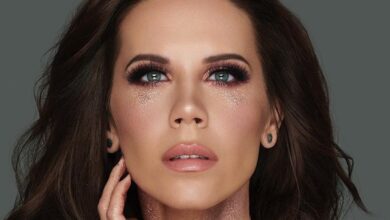
Step into the captivating world of cinematography, where the magic of storytelling unfolds right before your eyes. In this exclusive article, we will be exploring breathtaking videos crafted by renowned directors, each one a masterpiece in its own right. Prepare to be whisked away on a visual journey that combines art, technology, and raw emotions, as you witness the transformative power of moving images.
Immerse yourself in the first video, skillfully created by a visionary director whose name resonates across the film industry. With every frame, their unparalleled talent shines through, leaving you in awe of their ability to craft a compelling narrative. Traverse through beautifully composed shots, carefully orchestrated movement, and a mesmerizing blend of light and shadow. This video is a testament to the director’s unique style, one that effortlessly captures the essence of their storytelling prowess.
Now, in the second video, brace yourself for a cinematic experience like no other. This director’s innovative approach challenges traditional norms, pushing the boundaries of what can be achieved on the screen. Prepare to be captivated by their imaginative use of visual effects, stunning cinematography, and thought-provoking storytelling. As the scenes unfold before you, you’ll find yourself transported into a world where imagination knows no limits and every frame becomes a work of art.
Join us as we embark on this extraordinary journey through the art of cinematography, delving into the brilliance of these videos by renowned directors. Get ready to witness the magic of storytelling come alive before your very eyes.
Exploring the Art of Cinematography: Videos by Renowned Directors
Introduction to Cinematography
Cinematography is the art of capturing and manipulating images on film or digitally to create visually compelling stories. It involves the strategic use of camera movement, composition, lighting, and other techniques to enhance the overall visual experience of a film. Cinematography plays a crucial role in conveying emotions, setting the mood, and immersing the audience in the narrative. Through the lens of a camera, the world of a film comes to life, engaging viewers and evoking their emotions.
Definition and Importance of Cinematography
Cinematography encompasses the technical and artistic elements of capturing images for the purpose of storytelling. It involves making deliberate choices regarding camera placement, lens selection, lighting setups, and camera movements to effectively communicate a film’s narrative. The cinematographer’s expertise lies in the ability to manipulate visual elements to create a specific mood, atmosphere, or aesthetic that supports the story being told.
The importance of cinematography cannot be overstated. It serves as the visual language of a film, allowing directors to convey their creative vision while immersing audiences in a captivating visual experience. Through the skillful use of lighting, framing, and camera movements, cinematography enhances the storytelling process, intensifying emotions, and heightening audience engagement.
Evolution of Cinematography in Film
Throughout the history of cinema, cinematography has undergone significant advancements and transformations. From its humble beginnings, where films were shot in black and white and had limited camera movement, to the advent of color cinematography and the introduction of special effects, the art form has evolved and expanded.
The transition from analog to digital cinematography has revolutionized the way filmmakers approach their craft. Digital cameras provide greater flexibility, allowing directors and cinematographers to experiment with different visual styles and techniques. The ability to manipulate images in post-production has opened up new creative possibilities, leading to visually stunning films that push the boundaries of imagination.
Cinematography Techniques and Styles
Cinematographers employ a variety of techniques and styles to bring their artistic vision to life. These techniques include camera movement, composition, framing, lighting, and color grading, among others. Each element contributes to the overall visual aesthetic and helps convey the emotions and themes of the story.
Camera movement, such as pans, tilts, and tracking shots, can create a sense of dynamism and fluidity, drawing the audience’s attention to specific elements within the frame. Composition, the arrangement of elements within the frame, plays a crucial role in guiding the viewer’s gaze and emphasizing key aspects of the story.
Different lighting setups can evoke various moods and atmospheres. Harsh lighting can create a sense of tension or unease, while soft lighting can evoke a feeling of warmth or intimacy. Color grading, the process of altering the colors of a film in post-production, can enhance the visual narrative by using specific color palettes to convey particular emotions or themes.

The Role of the Director of Photography
The director of photography (DP), also known as the cinematographer, is responsible for translating the director’s vision into compelling visual imagery. They work closely with the director to create the right visual style and atmosphere for the film. The DP is involved in pre-production, where they collaborate with the director and other departments to plan the visual approach, select equipment, and establish the overall visual aesthetic.
During production, the cinematographer oversees the camera and lighting crews, ensuring that the shots are executed according to the director’s vision. They make critical decisions about camera placement, lens selection, and lighting setups to achieve the desired mood and atmosphere.
In post-production, the DP often collaborates with the colorist to ensure the final look of the film aligns with the original vision. Their expertise in lighting and image manipulation helps to enhance the film’s overall visual impact.
Famous Directors and their Cinematographic Styles
Numerous acclaimed directors have made significant contributions to the art of cinematography through their unique visual styles and techniques. Each director has their own approach to storytelling, utilizing cinematography to convey their narrative in a distinctive manner.
1. Alfred Hitchcock
Alfred Hitchcock, known as the “Master of Suspense,” employed innovative cinematography techniques to heighten tension and create a sense of unease in his films. His use of camera movements, such as dolly shots and zooms, added an element of dynamism and suspense to his storytelling. Hitchcock’s meticulous attention to detail and his emphasis on visual storytelling have made him an influential figure in the realm of cinematography.
2. Stanley Kubrick
Stanley Kubrick was renowned for his meticulous planning and visual precision. His films often showcased stunningly composed shots and elaborate camera movements. Kubrick’s symmetrical framing and use of wide lenses allowed him to create visually striking and intellectually stimulating films. His attention to visual details and his ability to manipulate visual elements have made him an iconic director in the history of cinematography.
3. Martin Scorsese
Martin Scorsese’s films are characterized by their energetic camerawork and dynamic editing. Known for his long tracking shots and quick cuts, Scorsese creates a sense of urgency and immersion in his storytelling. His ability to seamlessly integrate camera movement with narrative action has made him a master of visual storytelling.
4. Quentin Tarantino
Quentin Tarantino is known for his unique storytelling style, blending genres and incorporating nonlinear narratives. His films often feature unconventional camera angles, close-ups, and long takes. Tarantino’s use of visual techniques, such as his signature “trunk shot,” adds a distinct visual flair to his films, enhancing the overall cinematic experience.
5. Christopher Nolan
Christopher Nolan is acclaimed for his visually stunning and intellectually challenging films. He often employs practical effects and avoids excessive use of CGI, aiming for a more immersive and realistic visual experience. Nolan’s films feature breathtaking cinematography, intricate framing, and inventive camera movements that contribute to the overall narrative and thematic depth.

Key Videos by Renowned Directors
1. Alfred Hitchcock’s Rear Window
“Rear Window” showcases Hitchcock’s mastery of suspenseful storytelling and innovative cinematography. The film’s confined setting is artfully captured through the use of carefully framed shots, creating a sense of voyeurism. Hitchcock’s ability to create tension and build suspense through visual means makes “Rear Window” a masterpiece of cinematography.
2. Stanley Kubrick’s 2001: A Space Odyssey
“2001: A Space Odyssey” is an ambitious and visually groundbreaking film. Kubrick’s use of breathtaking imagery, stunning cinematography, and innovative special effects transports the audience to the far reaches of space. The film’s visual grandeur and attention to detail have made it a landmark in the history of cinema.
3. Martin Scorsese’s Goodfellas
“Goodfellas” captures the gritty reality of the criminal underworld with its fast-paced editing and dynamic cinematography. Scorsese’s innovative use of the camera immerses the audience in the chaotic world of mobsters, drawing them into the story through visual storytelling techniques. The film’s visual style perfectly complements its intense narrative, creating an unforgettable cinematic experience.
4. Quentin Tarantino’s Pulp Fiction
“Pulp Fiction” showcases Tarantino’s unique blend of nonlinear storytelling and visually striking cinematography. The film’s eclectic mix of camera angles, long takes, and unconventional framing adds a distinct visual flair to the narrative. Tarantino’s ability to infuse style into every shot elevates “Pulp Fiction” to an iconic status in the world of cinematography.
5. Christopher Nolan’s Inception
“Inception” pushes the boundaries of visual storytelling with its complex narrative and stunning cinematography. Nolan’s innovative use of practical effects, coupled with intricate camerawork and seamless visual effects, creates a visually mesmerizing experience. The film’s dreamlike sequences and mind-bending imagery demonstrate Nolan’s skill in weaving together narrative and visual elements.
Impact of Cinematography on Storytelling
Cinematography plays a vital role in shaping the narrative and emotional impact of a film. Through the skillful manipulation of visual elements, cinematographers enhance the storytelling process, immersing audiences in the world of the film and evoking powerful emotions.
The choice of lighting, camera movements, and framing can convey themes, moods, and character dynamics. Intimate close-ups can highlight emotions, while wide shots can establish the scope and grandeur of a scene. These visual choices, combined with the performances of actors, contribute to the overall narrative and enrich the audience’s viewing experience.
Audiences connect with films on a deeper level through the visual language of cinematography. A well-executed shot or a meticulously crafted scene can evoke emotions and provoke thought, enhancing the audience’s engagement with the story. Cinematography has the power to elevate a film from a mere visual spectacle to a profound and transformative experience.

Conclusion
Cinematography is a captivating art form that brings stories to life through the careful manipulation of visual elements. From the early days of cinema to the digital age, cinematography has evolved, allowing filmmakers to push the boundaries of creativity. The renowned directors mentioned in this article have left an indelible mark on the world of cinematography, inspiring future generations of filmmakers to experiment and innovate.
Through their mastery of cinematography, these directors have created films that not only entertain but also engage and resonate with audiences. The visual styles and techniques they employ are a testament to the profound impact cinematography can have on storytelling. As audiences continue to immerse themselves in the world of cinema, appreciating and exploring the art of cinematography is an enriching experience that unlocks a deeper understanding and appreciation of the magic behind the moving image.
Lipstick color theory: The Science Behind Choosing the Right Shade(Opens in a new browser tab)
The Best Waterproof Mascaras for Sweat and Tear-Resistance(Opens in a new browser tab)
Using the Color Wheel to Create Complementary Makeup Looks(Opens in a new browser tab)




